Before the Colony of Georgia was founded in 1733, the Margravate of Azilia was conceived. The territory was to be ruled by a military governor, i.e. a margrave.
Sir Robert Montgomery and Colonel John Barnwell proposed this venture in 1717 for lands south of Carolina.
It was disputed territory. Spanish, French and English had claimed it. French incursions had probed the east coast from Port Royal, SC, southward. The Spanish had pretty much established themselves in La Florida since 1513 and were well-rooted in St. Augustine.
England and Spain agreed by treaty that whichever should actually settle the land would possess it. In fact, though, Spain had withdrawn to positions south of the St. John’s River, and the Carolina Proprietors were having a hard time controlling the southern territory. So, possession of the area between Charles Town and St. Augustine was contestable.
Here’s when Montgomery and Barnwell entered the picture. Sir Robert, 5th Scottish Baronet of Skelmorlie, applied for permission to settle the area between the Savannah and Altamaha rivers. It would serve as a buffer colony between Florida and Carolina, i.e. between the English and the Spanish. The Carolina Proprietors agreed, so long as it didn’t cost them anything. Royal approval, however, was never granted.
To sell the idea to investors and settlers, Montgomery published a booklet, A Discourse Concerning the Design’d Establishment of a New Colony to the South of Carolina, in the Most Delightful Country of the Universe. Though he never visited the area, Montgomery, like any real estate developer, wrote the most glowing descriptions to promote it.
There’s no record of Barnwell ever visiting, either.
To begin, Montgomery assured his readers of his integrity. “It has been commonly observ’d, that gay Descriptions of new Countries raise a Doubt of their Sincerity. Men are apt to think the Picture drawn beyond the Life, to serve the Interest of the Representer.” Not in this case. He assured them that he’d learned from the most reputable sources, and that his motives were purely in service of his fellow man.
“It lies in the same Latitude with Palestine Herself, That promis’d Canaan, which was pointed out by God’s own Choice, to bless the Labours of a favourite People; It abounds with Rivers, Woods, and Meadows. Its gentle Hills are full of Mines, Lead, Copper, Iron, and even some of Silver; ‘Tis beautified with odoriferous Plants, green all the Year. Pine, Cedar, Cypress, Oak, Elms, Fruit or Timber Trees grow every where so pleasantly that tho’ they meet at Top, and shade the Traveller, they are, at the same Time, so distant in their Bodies, and so free from Underwood, or Bushes, that the Deer, and other Game, which feed in Droves along these Forests, may be often seen near half a Mile between them.
“The Air is healthy, and the Soil in general fruitful, and of infinite Variety; Vines, naturally flourishing upon the Hills, bear Grapes in most luxuriant Plenty. They have every Growth, which we possess in England, and almost every Thing that England wants besides. The Orange, and the Limon thrive in the same common Orchard with the Apple, and the Pear-Tree, Plumbs, Peaches, Apricots, and Nectarins, bear from Stones in three Years growing. The Planters raise large Orchards of these Fruits to feed their Hogs with, Wheat Ears have been measur’d there seven Inches long, and they have Barly, Beans, Pease, Rice, and all our Grains, Roots, Herbs, and Flowers, not to speak of Numbers of their own, which we can find no Names for; Beef, Mutton, Pork, Tame Poultry, wild Fowl, Sea and River Fish, are all there plentiful, and most at lower Rates, than in the cheapest Parts of Wales, or Scotland.”
 |
| General James Edward Oglethorpe |
For various reasons, the Margravate of Azilia didn’t get off the ground, but the idea of a buffer colony established around trade and agriculture settled by hard-working farmers and merchants ready to bear their arms against the Spanish gained traction. Within 16 years, General James Edward Oglethorpe arrived with his band to settle the colony of Georgia.
The Trustees' Garden was established in 1734 on a ten acre plot just to the east of the Savannah settlement to explore agricultural possibilities. Something somewhat akin to the Chelsea Physic Garden was envisioned, but with emphasis on commerce. Several high-value crops were tested.
 |
| Morus alba and Bombyx mori |
Silk. Since luxurious silk was in such high demand and commanded high prices, it was hoped that domestic sericulture would become a profitable enterprise in the American colonies. All that was needed were silk worms (Bombyx mori), mulberry trees and the right climate. The potential for silk seemed logical since red mulberry (Morus rubra) was native to the continent from Vermont to south Florida. White mulberry leaves (Morus alba), the preferred food of silkworms, was imported and did quite well. It eventually naturalized in North America.
According to an article by L. O. Howard, Ph. D. published in the USDA Yearbook of 1903 “Silk culture is said to have been introduced into New England about the year 1660 by a Mr. Aspinwall, who had nurseries of the mulberry at New Haven and on Long Island. Some trees were transplanted in Manslield, Conn., and Mr. Aspinwall furnished the inhabitants of that town with the eggs of the silkworm. Reverend Doctor Stiles, an early president of Yale College, aided Mr. Aspinwall in his efforts to introduce the culture in Connecticut.” Silk was also grown in Virginia and South Carolina, so it wasn’t far-fetched to try silk culture in Georgia. But despite those early and subsequent efforts, silk production didn’t take off in Georgia.
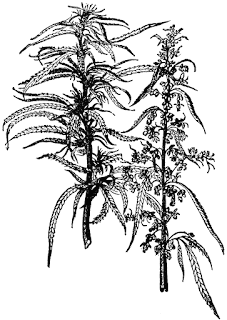 |
| Cannabis sativa |
Hemp. Note that Cannabis sativa, aka hemp, is of two types: industrial and “medicinal.” Industrial hemp is high in fiber and low in psychoactive THC. “Medicinal” hemp might contain from 3% to 30% THC. It has been grown for millennia, principally in China, India, and Arabia, but eventually spread to Europe and the Americas. Both types were grown extensively in early America without much distinction between them.
Cannabis has been highly valued for its many uses. Fiber has been used in cordage and clothing. Seeds have been used for food and oil. The leaves had their own, special application. Hemp was useful for trade, barter, and even for paying taxes. No wonder, then, that it was included as a crop in the Trustees' Garden. For governments, cannabis has been a bane and then a boon.
Flax. Linum usitatissimum was another desirable commodity known to have been used for about 30,000 years in the manufacture of linen fabric. From underwear to bed sheets, linen would always be in demand. Investing in the linen trade was a sure-thing like buying stock in toothpaste production; it was always in use, needed to be replaced, and necessary for everyone.
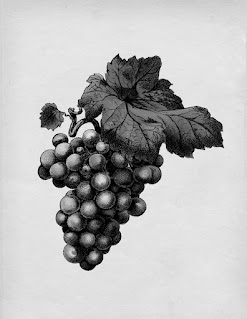 |
| Vitis spp. |
Grapes. When colonists first arrived on these shores, they found grapes growing practically everywhere. How fortuitous! Take a walk through our southern woodlands and you’ll see something like what they discovered. Cultivation began immediately. In fact, the oldest grape vine on the continent is thought to be The Mother Vine, Vitis rotundifolia, on Roanoke Island, NC. Perhaps it was dug from the forest and transplanted by settlers of The Lost Colony about 400 years ago. Life back then was tough, but joys could be found. As the Preacher of Ecclesiastes instructed, “Go, eat your bread with joy, And drink your wine with a merry heart; For God has already accepted your works.” Colonists took it to heart. I can find no mention of the species and varieties grown in Trustees' Garden, but grapes were among the crops.
 |
| Olea spp. |
Olives. Since Georgia lay in the “same Latitude with Palestine Herself, That promis’d Canaan” and olives (Olea spp.) were abundant in the Holy Land, they were tested in the Trustees' Garden. For whatever reason, olives did not become an important commercial crop in Georgia, but as of this writing olives are making something of a comeback. Olives are showing up in yards, gardens and orchards. Olive oil is now produced in limited batches in the southernmost part of the state.
Indigo. Indigofera, native to India, was an important cash crop wherever the local climate would allow it to be grown. Unless one wanted to dress in shades of gray and brown, dye was needed. Indigo was such a source.
Almost as soon as colonists set foot in North America, they set about to grow indigo. Crops were tested from New York to Louisiana. By the 1730s, efforts were made in South Carolina beginning with seeds sent to Charleston from Antiqua by 16 year old Eliza Lucas, a budding botanist. Before long, the indigo industry began to take off. Nearby Savannah, Georgia got into the action when seeds were planted in the Trustees' Garden.
Indigo cultivation, like most agriculture of the day, was labor intensive. The White people in the upper ranks of society didn’t think they were cut out for that kind of work. So slaves were imported to carry "The White Man’s Burden". Rudyard Kipling scathingly denounced such servitude about 200 years later. As a matter of fact, slavery was outlawed in Georgia UNTIL laborers were needed to expand and sustain the indigo industry, then altruism was tossed out the window. There were also cotton and rice enterprises to expand.
 |
| James Henry Hammond |
Cotton. This was the first place in North America where cotton was planted for potential commercial production. Enough is known about cotton that nothing needs to be written about it here. Needless to say, though, it became and continues to be immensely important. It was James Henry Hammond (1807-1864) of South Carolina who coined the phrase, “Cotton is king” in a speech before the U.S. Senate in 1858.
“No, you dare not make war on cotton. No power on earth dares to make war upon it. Cotton is king.”
Just so you know, Hammond was not a nice person, to put it mildly. A reading of his Secret and Sacred diaries will reveal plenty.
Cochineal. This exotic crop was also tested at the Trustee’s Garden. Cochineal (Dactylopius coccus) is a little “bug” that produces carminic acid, which is actually a deterrent to its enemies. But it is a valuable dye used to color textiles, cosmetics, and food. Feeding on some species of cactus, these little critters are cultivated, harvested and mashed to extract the red colorant.
Cochineal extract is non-toxic. Just think, though. When you put on that lipstick, it might be made of bug juice.
Since south Georgia is home to native Eastern Prickly Pear Cactus (Opuntia humifusa), it seemed that it would be a likely place for a cochineal industry to flourish. It didn’t. Cochineal production is now limited mainly to Peru and other Central and South American countries. But maybe cochineal can come into its own in Georgia as the new olive industry attests.
Now that your interest in Savannah’s Trustees' Garden has been piqued, wouldn’t you like to see it?
 |
| Trustees' Garden site |
That’s it. As Joni Mitchell sang,
“Don't it always seem to go
That you don't know what you've got 'til it's gone
They paved paradise, put up a parking lot.”
The Trustees' Garden served its purpose and was abandoned to be occupied by a fort and businesses including Kehoe’s Iron Works and Savannah Gas Light’s facility for converting coal to gas. The site now serves a multi-use entertainment/cultural facility and the Pirate’s House restaurant.
Return to GoGardenNow.com.

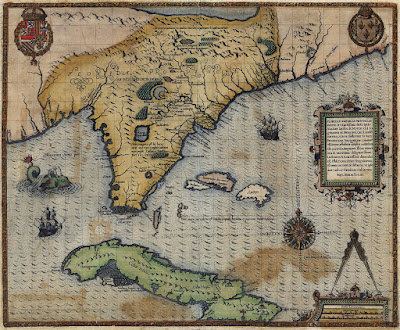




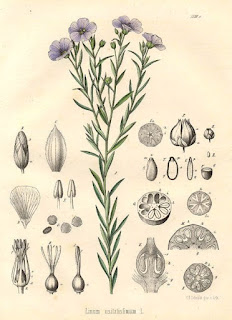
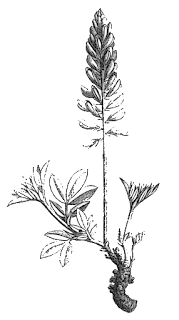





No comments:
Post a Comment